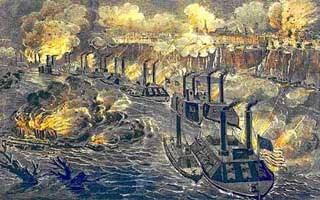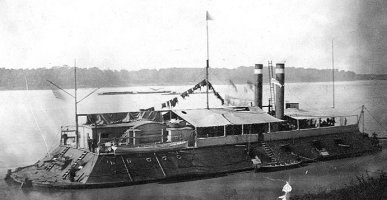|
Fort Hill was the anchor of the left flank of the rear Confederate defense line. The fort's position was so strong that the Union Army did not even attempt an attack during the assaults of May 19 and 22. Overlooking the Mississippi River and the water battery located on the bank below, Fort Hill commanded the bend in the river north of the city.

NPS Photos 
On the night of April 16, the fleet steamed down the Mississippi River in single file, hugging the western shore in an effort to sneak by without being detected. But Confederate lookouts spotted the boats and sounded the alarm. Quickly, Southern batteries went into action. To aid the Confederate gunners, tar barrels were lit along the city's river bank and houses in the village of De Soto, LA, across the river, were set on fire. With that assistance, the Confederate artillery fire pounded the Union ships, but despite numerous hits, only one transport was sunk. The remainder of the fleet met Grant's infantry near Hard Times, LA, as planned.

|
Last updated: April 14, 2015
